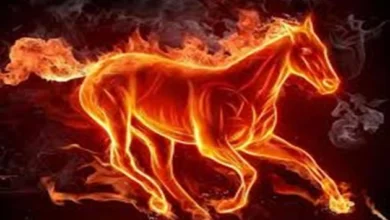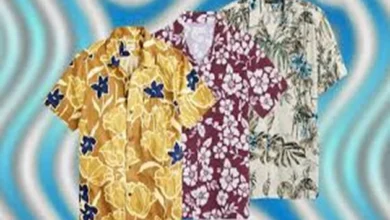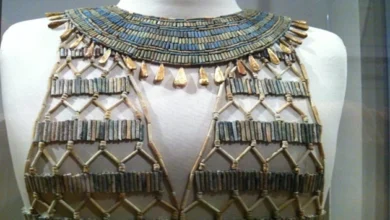How traditional Chinese Qipao dress became the Elegance of the Middle Kingdom
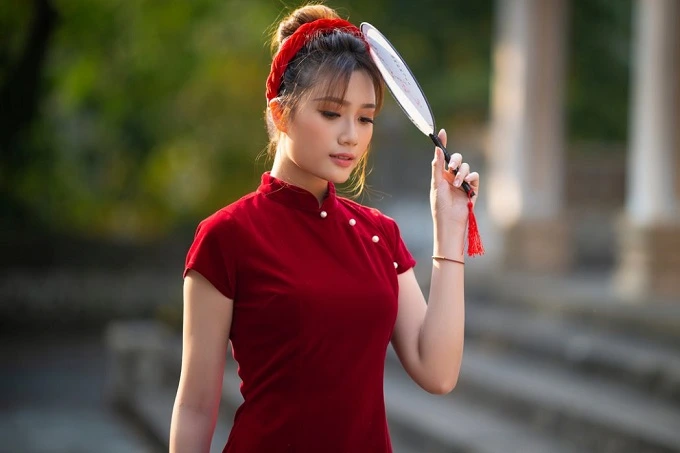
The origin of Qipao, also known as cheongsam, can be traced back to the early 20th century, against the backdrop of political and social upheaval in China.
Qipao dress has its roots in the long robes worn by Manchu women during the Qing Dynasty. It later evolved into the iconic bodycon dress with a side slit and high barrel collar that we know today.
Imperial times
The Manchu people, also known as the Jurchens people, ruled China during the Qing Dynasty (1644-1912). In order to distinguish themselves from ordinary people, usually Han Chinese, the Manchu minority made it mandatory to wear different clothes.

Like their male counterparts who wore Changpao or long robes, Manchu women wore long, loose silk dresses called Qipao. Designed to hide the female body down to the ankles, the qipao dress had slits on both sides of the dress, allowing for easy riding.
To better protect and cover their legs, Manchu women often wore trousers under their dresses. Although the Qipao was not intended to emphasize the female figure, it soon began to be decorated with beads, precious stones and floral embroidery. These intricate designs gave the Qipao an extra feminine touch that further distinguished it from the masculine Manchu robes.

New era
After the collapse of imperial rule in China, post-Qing Chinese society underwent a seismic transformation. From the mid-1910s, literati, influenced by Western ideals of liberation, began to advocate for women’s liberation from the shackles of patriarchy and tradition.
In all walks of life, women moved out of their home lives into the public spheres—getting an education, getting a job, and even entering politics. This accelerated momentum of change soon affected how women felt about their clothing and fashion choices.
During the May Fourth Movement in 1919, empowered female students took to the streets to fight for equality, wearing the Changpao associated with male intellectuals. This time, the trousers under the dresses gave way to stockings. As a fashion statement celebrating women’s liberation, it was also a tribute to changing circumstances. Although this new style was experimental, it soon won over and influenced women in major cities such as Shanghai, the ultimate birthplace of the modern Qipao.
Golden age
Proclaimed the Paris of the East, Shanghai in the late 1920s was a seductive mixture of glamour, sin and all things trendy. It was here, at the crossroads of Western and Eastern influences, that Qipao, as we know it today, began to take shape. The loose-fitting, iconic Manchu robes of yesteryear have been discarded in favor of more form-fitting silhouettes and slender forms.

Qipao models of the time featured shorter sleeves, longer slits, and a high, rigid collar that fastened asymmetrically with a traditional knotted button. These elements allowed women to maintain their composure and posture while teasingly exposing their skin as they strolled through streets now filled with smoky dance halls and movie theaters. The influence of the Western world also began to take its toll on the qipao styles of the time. As with the pinched waist, the Qipao often featured distinct Art Deco motifs that were flapper-approved calf length.
By this time, Qipao had become the quintessential garment worn by women of all social strata. From socialites to cabaret dancers, Qipao has brought to life the sensuality inherent in every Chinese woman, positioning itself as the new standard of modernity.
In addition to the Chinese-speaking world, Western audiences have become more and more interested in Qipao. This growing craze is said to have been fueled by the international performances of former first ladies in Qipao, such as Madame Chiang Kai-shek and Madame Huang Huilan, better known as Wellington Ku.
Post-war period
With the outbreak of the Sino-Japanese War in 1937, the charm and flamboyance associated with Qipao in the 1920s and 1930s became increasingly subdued. Against the background of rising prices for fabrics, qipao styles during this period were, to put it mildly, modest. With a simple and understated design, qipaos served a functional rather than an aesthetic purpose for women in these times of uncertainty.
Despite a brief resurgence after the war, the Qipao soon fell out of favor and became a symbol of Western bourgeois ideals as communist influence swept mainland China in 1949. From the now quiet streets of Shanghai, the fashionable and flirtatious Qipao has disappeared. In its place came the plain tunic suit, also known as the Mao suit, which was specifically designed to be gender-neutral. The suit was worn by both men and women and supported the egalitarian ideals held by Chinese society under the communist regime.
Second Golden Age
While post-1949 China may have been unrecognizable and even depressing to those who yearned for the charms of Old Shanghai, it was in Hong Kong that Qipao was resurrected. Fearing for their well-being, many wealthy families fled to what was then a British colony, which was considered a refuge from communist rule. Here the ladies continued to waltz through the streets in their custom-tailored, sequined Qipao for their sumptuous afternoon teas in true old Shanghai style.
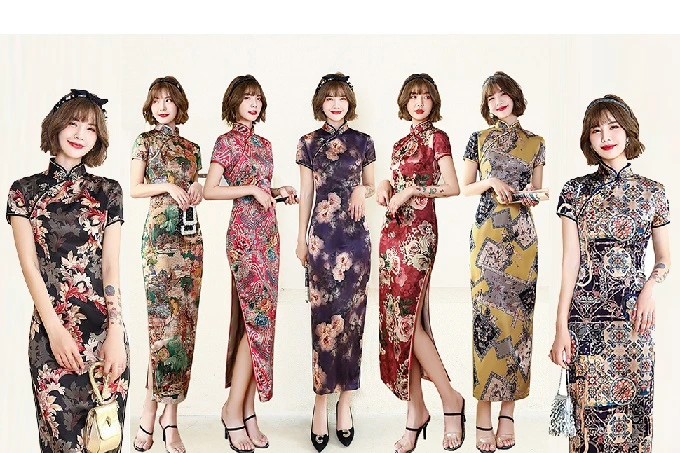
Hong Kong in the fifties and sixties was undeniably the second golden age for Qipao. Since Cantonese was the lingua franca in the city, this also likely happened when the Qipao dress began to be used interchangeably and eventually replaced by the term “cheongsam” (meaning long dress).
The term “cheongsam” was said to be preferred as it was not gender-specific. Before Western costumes became popular in China, Chinese men wore long robes, also known as the cheongsam. It was unlike Qipao, which has always been close and exclusively associated with women’s clothing.
Inspired by the cheongsam craze, bespoke tailoring services provided by local Shanghai tailors began to spread throughout the cosmopolitan city of Hong Kong. Not only was the Qipao a fashionable dress for the wealthy, it also became a point of pride for working-class women who learned how to make them from cheaper materials.
Reflecting the bustle of the city, qipao designs of the time featured bright geometric and floral prints, as well as Western-style zippers that replaced the traditional knotted buttons. Cheongsams with cropped hemlines, inspired by the advent of miniskirts in the west, have also become popular with women.
No more “out of fashion”
During its heyday in the post-war years, Qipao dominated every Chinese woman’s wardrobe. This was true not only in Hong Kong but also in other Asian countries such as Singapore, Taiwan, and societies with significant Chinese communities.
However, with the relentless tides of modernization and Western influences, the Qipao soon found itself competing with new fashion staples such as casual t-shirts and trousers. Ironically, the tight-fitting Qipao that once appealed to weight-conscious women was the very reason it was no longer favored. Singaporean women in the 1970s readily ditched the Qipao in favor of looser clothing that would not interfere with movement in their daily lives.
Driven by the twin forces of globalization and a preference for convenience, the onslaught of fast fashion has relegated the Qipao to a traditional dress reserved only for special occasions such as weddings. This foreshadowed the gradual decline of the tailor-made industry in many Asian societies. The evocative image of impeccably dressed women in Qipao walking the streets in high heels has become nothing more than a memory of a distant past.
21st century
A new generation of young female consumers no longer perceive Qipao as a relic from their grandmothers’ wardrobes. Instead, it is increasingly seen as a timeless legacy that could be reimagined with a contemporary fashion sense. This has led to innovative designs such as stand-up collar and midi-length qipao jumpsuits suitable for all formal and informal occasions.
Adding contemporary style to a traditional dress reflects more than just the creativity of today’s dressmakers. It also testifies to the versatility of Qipao and its core elements that have stood the test of time.
While Qipao is once again winning the hearts of women all over the world, it has also successfully conquered high fashion. Through cultural cross-pollination, Asian culture is increasingly seen as a source of inspiration on international fashion runways. Celebrity designers such as Jean Paul Gaultier, Guo Pei and Yves Saint Laurent have paid homage to the Qipao by incorporating its elements into high fashion. With the rethinking and invention of Qipao, a new generation of Western audiences are beginning to move beyond the stereotypes of Chinese culture.

True to its versatility, the Qipao has weathered political and social upheavals and has grown accustomed to changing economic patterns, each time becoming stronger than ever. The resurgent interest it enjoys today has firmly cemented its importance as a symbolic marker of Chinese identity.
Its prestige as a cultural emblem continues to inspire women of all cultural backgrounds who want to add elegance and sophistication to their everyday wear. Synonymous with sensuality, sophistication and enduring nostalgia, Qipao will remain in the wardrobes and hearts of future generations of women for many years to come.


